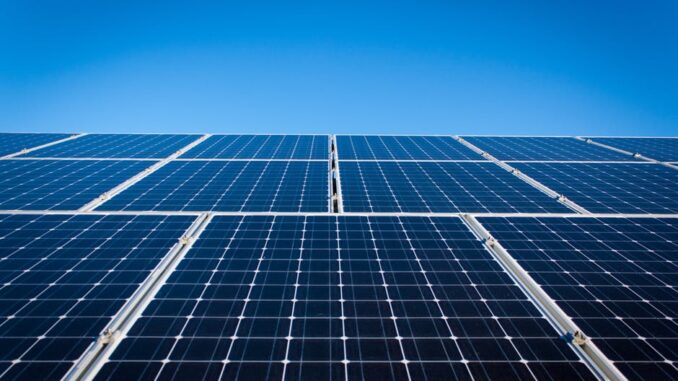The projects, with capacity of more than 2.6 gigawatts, are being developed by Acwa Power, PIF’s Badeel and Aramco’s power unit
Two major solar photovoltaic power projects in Saudi Arabia have achieved financial close with total investment of $2.37 billion.
The projects are being developed by energy company Acwa Power, the Water and Electricity Holding Company, or Badeel – which is owned by the Public Investment Fund – and the Saudi Aramco Power Company.
The Al Shuaibah PV 1 and Al Shuaibah PV 2 plants in Makkah province will have capacity of 600 megawatts and 2.031 gigawatts respectively, and are capable of powering about 450,000 households, the Saudi Press Agency reported on Sunday.
Commercial operations are scheduled to begin in 2025.
Saudi Power Procurement Company is the procurer and off-taker for the projects, which will be jointly owned by Badeel (34.99 per cent), Acwa Power (35.01 per cent) and Sapco (30 per cent).
“Securing financing for this groundbreaking project marks a significant step towards achieving Saudi Arabia’s clean energy goals, in alignment with the National Renewable Energy Programme, which aims to generate 50 per cent of electricity from renewable sources by 2030,” said Marco Arcelli, chief executive of Acwa Power.
Saudi Arabia, the Arab world’s largest economy, is developing several new renewable energy projects as it aims to boost its clean energy capacity and become carbon neutral by 2060.
The kingdom’s NREP is led and supervised by the Ministry of Energy, and the PIF aims to develop 70 per cent of the programme’s target capacity by 2030.
The PIF, through Badeel and in partnership with Acwa Power as a lead developer, is executing five NREP projects, with a cumulative capacity of 8 gigawatts and more than $6 billion of investment from the fund and its partners.
These projects – Sudair, Al Shuaibah 2, Ar Rass 2, Al Kahfah and Saad 2 – will support the local private sector through requirements for content contribution and the procurement of equipment, supplies and services through local supply chains.
The Ar Rass plant will have a capacity of 2 gigawatts when finished. Saad 2 will produce 1.125 gigawatts while Al Kahfah will have 1.425 gigawatts of capacity upon completion.
Meanwhile, Aramco’s investment in the Al Shuaibah projects through Sapco is its second participation in the NREP and is line with the company’s objectives of achieving net-zero of operational scope-1 and scope-2 emissions by 2050.
“While oil and gas will play a major role to meet the energy demand of today and tomorrow, renewables will increasingly play a part in the energy transition to address the climate change challenges,” said Mohammed Al Qahtani, president of downstream at Aramco.
“The projects mark a significant milestone to support Aramco in achieving its decarburisation targets.”
The $1.63 billion senior debt financing for the projects includes a $450 million, Saudi riyal-denominated loan from the National Development Fund on behalf of the National Infrastructure Fund, as well as a $1.18 billion, US-dollar denominated commercial facility from a consortium of local, regional and international banks.
The lenders include Bank Saudi Fransi, First Abu Dhabi Bank, Mizuho Bank, Riyad Bank, Saudi National Bank, Standard Chartered Bank and Saudi Investment Bank.
Globally, investment in renewable energy needs to double to more than $4 trillion by the end of the decade to meet net-zero emissions targets by 2050, according to the International Energy Agency.
The IEA’s stated policies scenario, which is based on the latest policy settings worldwide, expects clean energy investment to rise to slightly more than $2 trillion by 2030.

